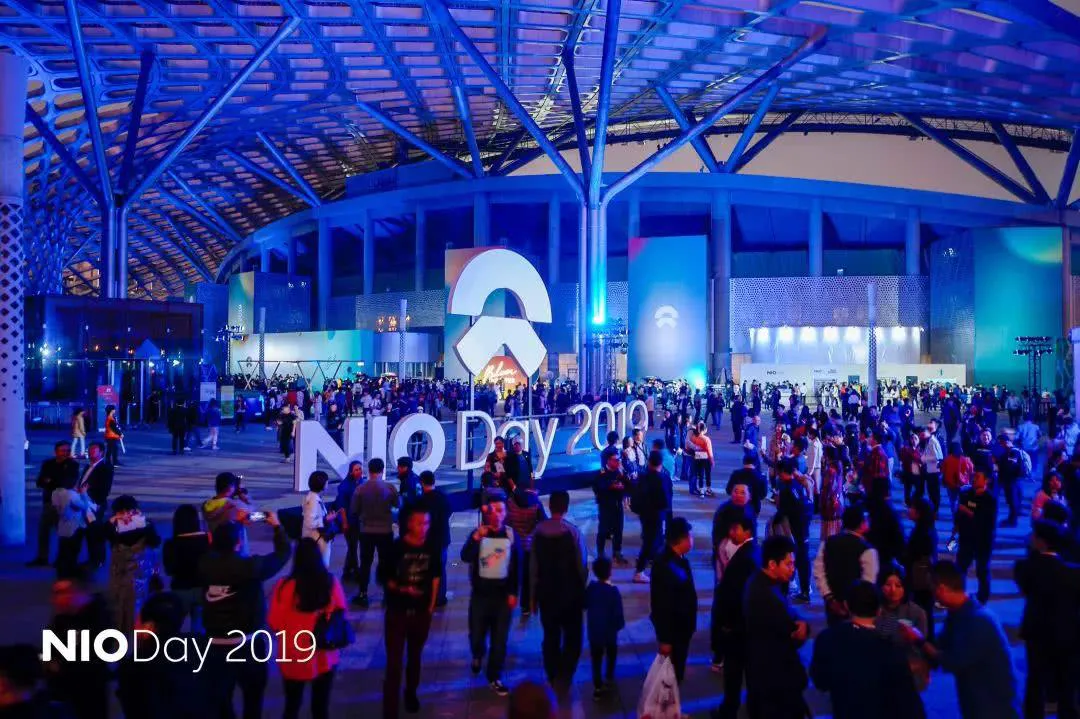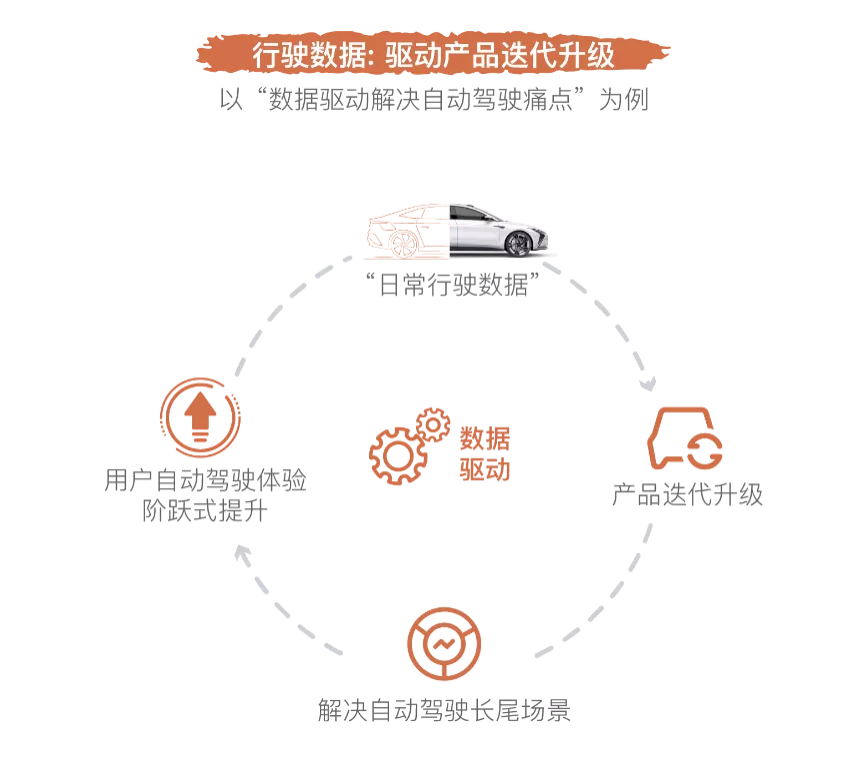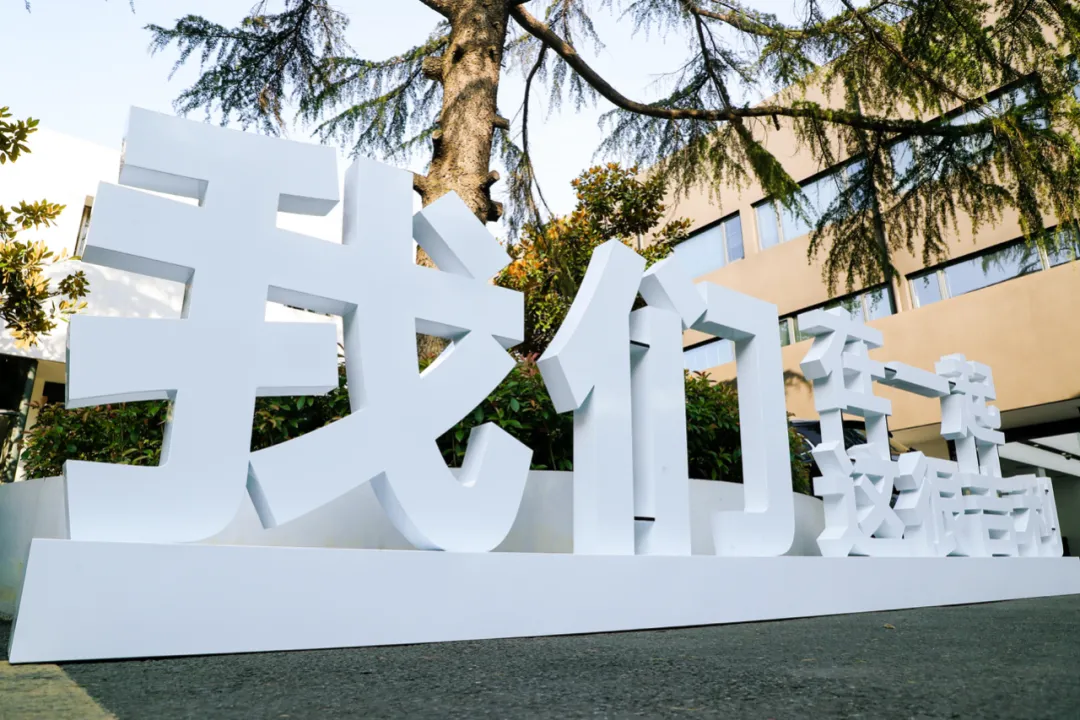A media under the Outing 100 banner, focusing on the evolution of the automobile travel industry chain
Original by Zheng Wen
“We use the concept of interweaving cosmic rays to create a futuristic feeling by folding and crossing lines and surfaces, creating a strong design theme. The entire vehicle visually radiates from the central emblem to expand on both sides, making the front of the car appear more three-dimensional and impactful. The addition of a radial intelligent atmosphere light…”
On the afternoon of June 7, the Geely China Design Center on No. 321, Shilong Road, Xuhui District, Shanghai was first opened to the media to showcase Vision Starburst. Designers Pan Tianwei and Yao Kejia gave passionate presentations on the design language of Vision Starburst.
It is hard to imagine that Vision Starburst is actually a proof-of-concept for Geely’s integrated user co-creation idea. The “Energy Storm” design incorporates Geely’s “Cosmic Echo” 4.0 design philosophy, while also carrying users’ personalized and differentiated aesthetic views and creative ideas.
The “Energy Storm” design presented by Vision Starburst will soon be applied to Geely’s new models, coexisting on the market with the current “Energy Music String” design, meeting the personalized and diversified needs of users in the 4.0 era. Its market application, in a sense, is the user’s real evolution from “consumption” to “creation.”
On the same day, Geely also officially released the user brand “WE”. The newly launched Geely Car App will become the brand’s co-creation platform.
It is worth noting that the orange-blue gradient of the “WE” brand forms the logo of two “G” intertwined circles, which are selected from more than 1,000 original user design submissions. In the operation of the “WE” user brand, user moderators, design consultants, and user designers will work together to build an interlinked and collaborative ecology, fully realizing user moderation, user election, and user operation.
Even the most indifferent person can see that users are becoming increasingly important.
How do users become gods?
Co-creation means growing together with users, enriching the brand’s connotation and extension, letting users feel and enjoy joining in, creating value, and bringing a strong sense of belonging and pride. In the long run, this will eventually form a new core ecology of people, cars, and enterprises.
Geely is not the first to use co-creation to “please” consumers.Gathering car model names and advertising slogans are the initial form of simple co-creation. As early as 2007, Shuanghuan Auto launched a Smart-like car model called “Little Noble” which openly solicited advertising phrases. This was a very creative act, which was unparalleled at the time.
Later in 2015, Cowin proposed the concept of “crowdsourcing car making”, inviting users to participate in designing sketches and turning their works into models to be displayed at auto shows.
Four years have passed, and it is only now that the action of co-creation with users has truly set off a trend in the automotive industry.
In July 2019, the new automaker NIO Motors collected brand name submissions from all over the world, ultimately selecting “Mcube” as the English name for its next car model. At that time, NIO Motors even claimed to invite users to participate deeply in brand definition, design, and manufacturing, but it eventually did not come to fruition.
The vehicle brand “Haval” has played a prominent role in the world of co-creation. Last year’s “Big Dog” naming event received both praise and criticism, but you cannot deny that it sparked discussion and the car became a sensation just because of its name before even hitting the market. Since then, the naming of cars under the umbrella of Great Wall Motors has begun to move closer to the “cute pets circle”, and Great Wall Motors has become increasingly adept in interactive marketing activities with users, much like opening up a second artery.
Dongfeng Peugeot is worth mentioning since there are not many joint ventures that propose the concept of co-creation. Nevertheless, the new car “C5X” launched the “Trend Partner Plan” and proposed user co-creation, experience, and sharing of the car, which can be accessed through an official mini-program.
This initial form of co-creation is still based on marketing but it is unrealistic for non-professional users to participate deeply in the car manufacturing process on the intricate and complex traditional car making chain. So, in the stage of intelligent automotive transformation, user behavior data has become an important basis for product improvement, and digital marketing systems are becoming more and more mature, marking the development of a new soil for co-creation.
Many new car makers have sniffed out new operating models.
For example, in 2019, aiways auto released the “7921” user partner program, which included many expandable ports in the first product U5, allowing users to participate in designing customized accessories like cosmetic bags, drying racks, storage boxes and much more.
This aspect of practice is clearly something that NIO cannot overlook. In 2019, Li Bin proposed using his 50 million shares of NIO stock to set up a user trust, providing users with social and activity funding, and most importantly, the right to nominate directors.
Many people cannot understand why NIO users have such a high degree of participation in the daily operation of the company. They also do not understand why NIO DAY is organized by users, from the location selection, preparation to reception. If you don’t know one, it’s hard to know the other. This year’s NIO DAY, Li Bin announced that the profits from carbon emission trading will be shared with users.
This kind of co-creation obviously has a deeper strategic consideration.
What NIO has done is laying the groundwork for a new ecosystem centered on people, cars, and enterprises, as we mentioned earlier. In the long run, a symbiotic ecosystem must be mutually beneficial for all parties since pure passion from users alone is not sustainable in the long term.
Speaking of such forward-looking co-creation, the “Genesis Plan” launched by IM Auto also needs to be highlighted. IM Auto, established by SAIC and Alibaba Pudong Zhangjiang High-Tech Park, will allocate 4.9% of its equity to create user rights. Based on this equity, IM Auto will issue 300 million “Genesis” through blockchain technology to create CSOP user data rights program.
The “Genesis” can be obtained randomly during vehicle use, by participating in brand co-creation and interactive tasks, and more importantly, by generating data during driving. Its output follows the “halving every four years” rule, so theoretically, the chance of obtaining Genesis is higher in the early stage. Finally, the Genesis will be returned to users in the agreed manner and exchanged for software and hardware upgrade packages such as battery packs and intelligent driving functions.

Another car brand that has relevant settings is the Jidu Auto. During the media interview when Jidu 001 was launched, the An Conghui team also mentioned that they will set up related user rights in the future.
Only when users are regarded as important operating resources and strategic assets of the enterprise can an automotive enterprise become an “user-oriented” ultimate enterprise. At this point, users are no longer superficial service objects but rather the deep-level interest community and symbiotic ecosystem that we have been emphasizing in this article.
“Adult, times have changed.”
The solid and unbreakable castle that has been standing for over a century collapsed overnight. In this electrification and intelligence revolution, the value system of automotive products has shifted from “performance stimulation” to “intelligent experience”.
In the past, in the development process of traditional cars, “engineering thinking” dominated, and different car brands often differentiated themselves based on calibration to achieve brand positioning from high to low end, and performance played an absolutely crucial role in this differentiation.From low to high engine cylinder numbers, the clear product matrix is formed by the distinct performance levels of the products. These important components, which determine the powertrain, occupy the most core position in the automobile product value system, and their deep-seated barriers are as strong as copper walls. This is also an important reason why Chinese automobile brands that arrived late have been slow to catch up with foreign brands.
“Engineering thinking” happens to be very good at promoting the ultimate progress of performance.
For example, Piech’s strong engineering thinking-oriented product development rekindled Audi and revitalized Volkswagen Group; Ferrari’s mid-engine V6/V8 two-seater sports cars experienced continuous leaps from more than 5 seconds to 4 seconds, 4 seconds to 3 seconds, and 3 seconds to just over 2 seconds from the 80s to today.
However, this thinking has been greatly impacted by the changing times. With the powertrain relying on three-electric systems, performance is no longer as valuable.
Therefore, product value is redefined, and consumer experience becomes more important.
Even more deadly, in this new revolution, many founders from Internet companies have joined the race, and their more important role is super product manager, who is best at developing products based on user thinking. It is hard to believe that a traditional automaker’s leader would do multiple exhibits on the company’s stand for user navigation and concept explanation every day during a car show like Li Bin and Qin Lihong of NIO.
In discussions at the AutocarMax editorial department, this confusion was also mentioned: although traditional automobile products excel in driving performance, the design of in-car functions can be very unfriendly and, in some cases, even reach an anti-human level. Consumers find it hard to imagine why a very mediocre feature can be mass-produced on a car, but the fact is that it has happened. This phenomenon is also inevitably linked to the development of vehicle models led by “engineering thinking,” which often overlooks the consumer experience while focusing on feature implementation.
Especially in the development of autonomous driving, which is closely related to driver and passenger experience, there is a trend where user experience plays an increasingly important role in the product development process. This means that not only the narrow concept of user services for purchasing and after-sales but the fundamental change in automobile product definitions requires “consumers.”
That’s why traditional car companies have seen changes.Changes were quickly made, just as Geely said, the birth of the “Us” brand was not only the practice of Geely’s “customer-centric” and “open door” philosophies, but also the beginning of Geely’s construction of a completely new ecology of “platform openness and user co-creation.”
The earth shakes and the mountains move as more and more automakers embrace users as part of the fate of the car brand. The initial goal of traditional automakers is to gather a large number of high net worth car users who are still not “adopted” by anyone. At present, it seems that the online mall, APP-controlled cars, and points management projects implemented by the “Us” brand are still in the relatively shallow service stage.
Of course, more in-depth cooperation still requires continuous practice, and there are still many uncertainties in the execution process. The ecological blood-making ability that forms a closed loop under a mutual incentive mechanism still needs more thinking and design. Once this symbiotic ecology is completed, it will produce enormous creativity and value.
Compared with the new forces of car making, the advantage of traditional enterprises lies in their strong foundation and user trust. However, at the same time, this also poses a challenge. The large user base makes the challenge of operational management even greater.
For traditional automakers, the huge distribution system that currently exists is a significant bottleneck. In terms of efficient two-way communication between enterprises and users, dealers are difficult to become a truly competent assistant for automakers to operate users. Currently, some OEMs are trying to use agent companies to operate and serve users online, but this can only be a transition. Eventually, they must return to the OEM and cannot rely on others.
In the future, as users become increasingly important to car companies, more precise positioning of users may come not from “God” but rather from the “water” that can carry and overturn the boat.
After all, no one wants to experience the ironic plight of an ideal car company that is criticized by users for their “user thinking.”
This article is a translation by ChatGPT of a Chinese report from 42HOW. If you have any questions about it, please email bd@42how.com.
